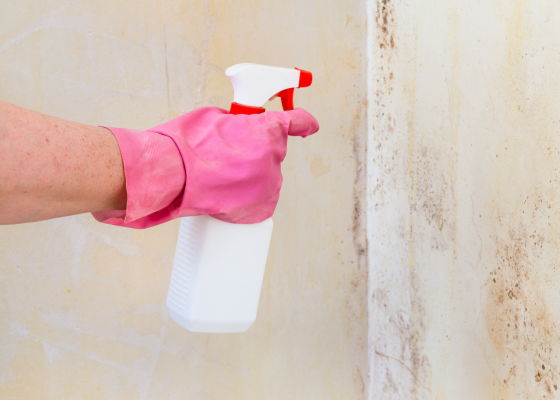Experts warn that drying laundry indoors may have adverse effects on health

In the cold winter season, many people hang their laundry indoors because it takes a long time to dry even if they hang it outside. However,
Why drying clothes indoors could put your health at risk
https://theconversation.com/why-drying-clothes-indoors-could-put-your-health-at-risk-248467

Drummond sees the danger in drying indoors because leaving wet laundry indoors can lead to mold growth. 'Drying wet clothes on racks in poorly ventilated areas can increase the amount of mold that grows in your home, which can lead to poor health or even death,' he says.
Mold is a group of fungi that form particles called spores , which fungi, including mold, produce spores when the right conditions for growth are met, such as cool temperatures and high humidity. Humid environments allow fungal spores to establish and grow easily, which is why mold is commonly found in bathrooms and on ceilings in damp rooms around the home.
As mold grows, it can form black or green spots on walls and cause an unpleasant moldy odor. And not only is mold just unpleasant to look at and smell, living in a moldy home for an extended period of time can pose serious health risks.
There are many different types of mold, but the ones that are most likely to cause problems in humid homes are Penicillium and Aspergillus . These molds are also present in ordinary homes, and people inhale small amounts of mold spores on a daily basis.

Fortunately, the human immune system is good at detecting and killing spores, so the rate of mold-related
In more extreme cases, mold spores can germinate inside the airways and form web-like projections called mycelium , which grow into sticky masses that can block airways and damage lung tissue, potentially causing the lungs to bleed, Drummond explains.
Mold is generally treated with antifungal drugs, but in recent years, the increase in drug-resistant mold has become a problem. For example, in patients who take azole drugs for a long period of time to treat Aspergillus infections, mold may acquire resistance to these antifungal drugs.
However, recent studies have shown that drug-resistant Aspergillus oryzae are increasing not only in patients taking antifungal drugs, but also in the general environment. This is because azoles and other antifungal drugs are used as pesticides to protect agricultural crops, which are threatened by fungal infections just like humans. Research has also shown that mold exposed to high temperatures is more likely to develop resistance to antifungal drugs, and it has been pointed out that rising temperatures due to climate change may also be related to this.

Mold can have serious adverse effects on people, such as the death of a two-year-old child living in the UK in 2020 from ' severe respiratory illness due to prolonged exposure to mold in the home.'
As humidity tends to be high in the winter in the UK where Drummond lives, he advised, 'It's important to prevent mould from growing in your home. The best thing to do is take measures to reduce humidity, such as improving ventilation in the home, using a dehumidifier or, if you dry laundry indoors in winter, buying a heated clothesline.'
Related Posts:
in Science, Posted by log1h_ik







